The star-like flowers of the boronias have long enchanted bush walkers in various parts of Australia from the east to the west coast. Add to this the delicate floral perfumes and cut flower qualities of species such as the brown boronia (B. megastigma) and you have a group of plants worthy of the attention of gardeners. It should be said, however, that boronias do not rank among the easiest of plants in the garden but it is fair to say that with the right attention to horticultural detail you can enjoy delightful displays of this outstanding group of Australian plants. If you treat boronias as short-lived perennial shrubs in your garden then you can enjoy them while they last without being overly disappointed if they do not become a more permanent part of the landscape.
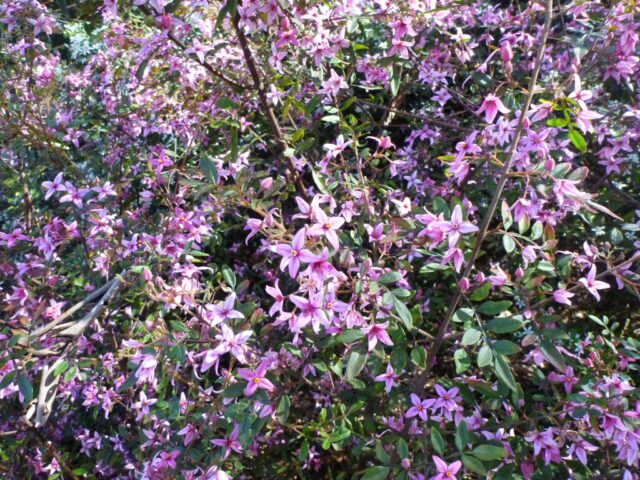
Boronia ‘Telopea Valley Star’
Boronias belong to the citrus family (Rutaceae) which is characterised by the presence of all kinds of interesting essential oils in the foliage and flowers. By holding a leaf up to a light source you will usually see translucent dots that represent the oil glands that are spread across each leaf. Crushing the foliage usually unleashes a scent which can vary from delightful to distressing, depending on which member of the family you are examining. Boronias are typical in this regard and foliage fragrances vary from the pleasing lemon-like Boronia citriodora to an odour not unlike that left by a tom cat marking its territory as in B. pinnata. A number of the boronias also have wonderfully perfumed flowers such as brown boronia and native rose (Boronia serrulata).
Growing boronias
It is very important to try and provide boronias with the optimum growing environment in order for them to fulfil their full potential. Dappled sunlight is ideal and especially protection from hot afternoon sun in summer, as well as from wind, which they dislike. A well drained soil is essential in order to lessen the chances of the plant succumbing to its greatest enemy, root rot. Lowering the humidity around the base of the plant by mulching with a layer of gravel also seems to help discourage the fungal pathogens that cause the roots and crown of plants to rot. Additional moisture may be required by boronias when they are coming into bud and bloom, particularly if dry weather prevails through late winter.
Longer stems can be used for cut flowers when the first few buds have started to open. This will also serve to start the pruning process which can be completed after flowering by giving the plant a light trim to remove any dead flowers that remain. This is also the perfect time to fertilise the plant by giving it a handful of a slow release native plant food or alternatively mulch around the base of the plant with a layer of well-rotted horse or cow manure a few cm thick. I have had people ask me if they should feed their boronia when it is in bud, the answer is to wait until after your boronia has flowered before you fertilise. If you feed before blooming you risk stimulating ‘bypass’ growth, where leafy new growth starts and covers up the flowers before they have a chance to bloom. As soon as flowering has finished, cut back just behind the spent flowers and then fertilise to stimulate the new vegetative growth that will create next year’s flower display.
For many gardeners the best way to grow boronias is in a medium sized pot, say 30 cm in diameter. Use a potting mix that conforms to the regular Australian standard (signified by a black logo with five ticks) and be sure to thoroughly mix in a couple of handfuls of a slow release native plant food. A sheltered patio or courtyard that receives at least a few hours sunlight a day would be ideal.
Best boronias for beginners
Brown boronia (B. megastigma) Undoubtedly the best known and most widely cultivated of the boronias, this species is highly prized for its beautiful fragrance. The usual form in cultivation has unusual contrasting bicoloured petals that are brown on the outside and yellow on the inside. A number of cultivars have been selected from this species including one with a more compact habit called ‘Heaven Scent’; ‘Jack Macguire’s Red’ features a red exterior to the petals instead of brown, while ‘Harlequin’ has stripy red backing to its petals.
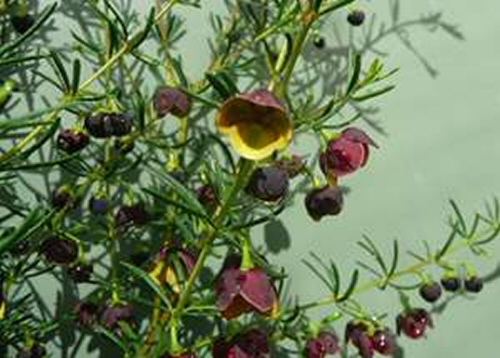
Brown Boronia (Boronia megastigma)
Red boronia (B. heterophylla) features bell-shaped blossoms that are a striking magenta pink and have a delicate perfume that adds to its appeal as a cut flower. It grows to about 1.5 m in height by half a metre wide. It originates in Western Australia but has adapted well to east coast gardens as well. ‘Ice Charlotte’ is a white flowered form of this species that has similar requirements.
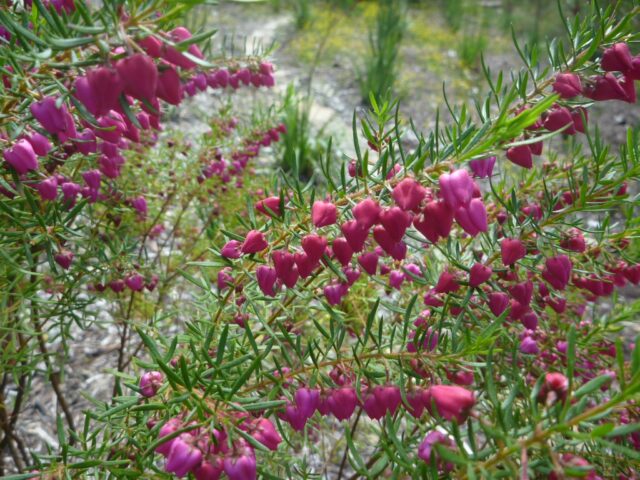
Red Boronia (Boronia heterophylla)
Boronia muelleri ‘Sunset Serenade’ is another relatively reliable variety that has proven itself over time. It has attractive ferny foliage and masses of soft pink flowers in spring and does well along the south east coastal region from Sydney to Melbourne. It is a compact plant growing to about a metre in height by a similar width. Boronia ‘Seaside Stars’ is also another good Boronia muelleri selection, flowering for months with rosy pink perfumed flowers.
Boronias for advanced growers
Native rose (B. serrulata) derives its common name from its delightful floral perfume which is reminiscent of the scent of some of the best smelling roses. The cerise flowers are presented in pendulous clusters at the ends of the branches of a small shrub growing to a metre in height at most by a half a metre in width. It can be hard to propagate so may be hard to find.
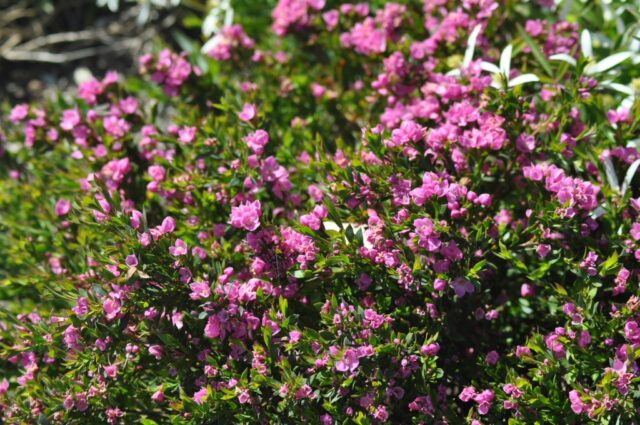
The native rose Boronia serrulata
‘Tyalge Ruby’ is a relatively new variety that is probably a hybrid between the lemon scented boronia (B. citriodora) and B. muelleri. It is a delightful compact shrub about a metre in height and width with delicate pink flowers in winter and spring and a fresh lemony fragrance to the foliage.
Boronia crenulata is somewhat larger in stature than most of the other species. It will reach 1.3 m in height by a metre in width and features masses of rosy pink flowers from late winter into spring.
Grafted Boronias
Recent research into the propagation of boronias has improved the prospects for successful garden cultivation of many of the desirable boronias. Boronia clavata has proven to be a more adaptable species than most boronias, being fairly reliable even in heavier soil types. Grafted boronias are generally only available through specialist native plant nurseries.
Hybrid boronia
‘Purple Jared’ is probably the only deliberately bred hybrid boronia. It is a cross between the brown boronia and a red flowered form of Boronia heterophylla done by research workers from the University of Western Australia. The resulting hybrid has very distinctive purple flowers that carry a beautiful perfume that is a blend of that of its parent species. It is well worth a try in the garden.
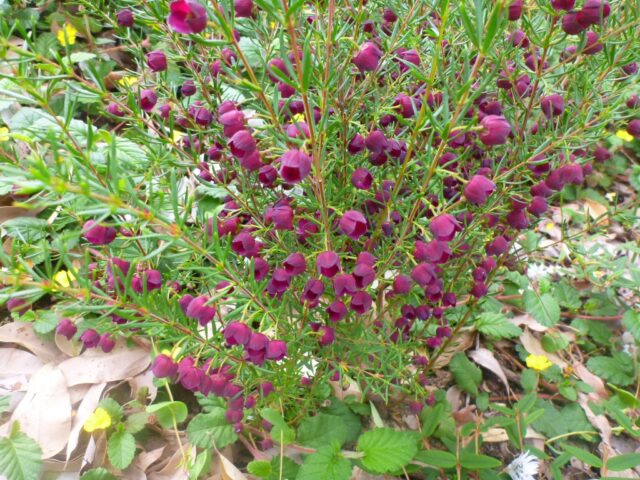
Boronia hybrid ‘Purple Jared’
Interesting Boronia fact
The Melbourne suburb Boronia was named for its historical connection with the highly perfumed brown boronia. Even though this species occurs naturally in Western Australia it was widely grown for its outstanding qualities as a cut flower by local councillor Albert Chandler who happened to also be a nurseryman and cut flower grower.
Difference between boronia and crowea
While these two groups belong to the same family, Rutaceae, they are easily differentiated by the number of petals, with boronia having four while crowea always has five. In addition croweas have their peak flowering in autumn compared to the spring flowering boronias.
Places to see boronias
Karwarra Gardens Melbourne
Mt Annan Botanic Gardens Sydney
Australian National Botanic Gardens Canberra
King’s Park and Botanic Gardens Perth
